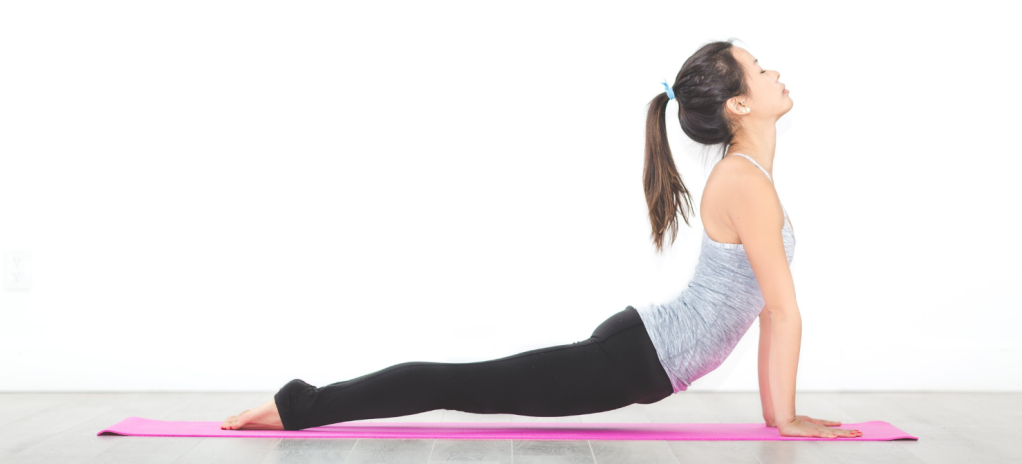
I like to joke to my patients that gravity and yoga keep me in business. That’s pretty true in the case of gravity, but I’m not being totally fair in the case of yoga, which can be an absolutely wonderful thing. I am a HUGE proponent of mindfulness and mind-body connection, especially in this world where we spend so much of our time in intimate relationships with our tech. But I can’t tell you how many times I have a patient tell me they feel stiff and ask if they should do yoga. The question is: when you feel stiffness, is stretching always the answer? In truth, it’s often the exact opposite of what you need.
There is something lying deep beneath your feeling of stiffness, and that thing is called “microinstability”. Let’s examine this concept in the context of your low back. The center of your body, also called your trunk or your core, is meant to stay relatively still as your extremities (arms and legs) move. Picture yourself in the middle of a lake, standing on a platform. Your goal is to jump onto a float 10 feet out in the water.

Now, if the platform you’re standing on is bolted down to the bottom of the lake, you’re going to be able to take a couple steps across it, jump, and hit that float with great accuracy. On the other hand, if the platform you’re jumping off is only secured to the bottom of the lake by 1 chain, allowing it the freedom to float around on the waves, your jump is likely to be wildly inaccurate. Now let’s take that concept back to your body. Again, your core is meant to be the stable foundation upon which your extremities move. It is the platform in the middle of the lake, allowing your extremities to accurately kick a ball or pick up a box. If your core is stable and relatively still, the movement of your extremities is going to be very accurate and the risk of injury is low. If your core is wiggling all over the place, however, the system breaks down.
I once had a patient, a man in his early forties, who said his daughters told him he walked like Taylor Swift. I watched him walk, and frankly, had to agree. As he walked, his pelvis swiveled side to side with each step. There was no stable platform for extremity movement there – the platform was all over the place. In his case, he was coming to me for back pain. He had what a PT would call mechanical instability in his low back, and what might make more sense as a “wobble-wobble”. That sassy Taylor Swift walk was constantly wobbling the junction between his L4 vertebra and his L5 vertebra, causing irritation of the soft tissue structures and spasm of the overlying muscles, which were trying to help. So his perception of stiffness in this area was actually the result of his muscles going into spasm to try to guard the excess of movement at the joint. This patient could easily have decided he wanted to stretch his low back. He could have done spinal twists and downward dogs and forward folds. But he would have ended up in my office anyway if he’d made that very well-intentioned move. Because what he ACTUALLY needed was something called stabilization exercise.

Stabilization exercise is, in a nutshell, exercise where your center stays still and your extremities move. It’s not holding a plank for 2 minutes straight. It looks very much like pilates, because that’s actually exactly what pilates is – stabilization exercise. Sometimes it’s on a mat and sometimes it’s on a reformer, but what you’ll notice if you’ve ever taken a pilates class is that the exercises are a million variations on a theme in which your center stays still and your extremities move. This requires good coordination and counter-balancing between the front side and the back side of your body, just as should be present with walking or running or lifting or whatever other activity you might choose to do.
A lot of us, for one reason or another, have a very asymmetric ability to stabilize. Try this: lie on your back, legs outstretched. Place your fingertips on the bony prominences at the front of your pelvis to monitor how you’re doing. Slowly lift one leg up, keeping it straight, then lower. Did you feel any movement at your pelvis? Chances are you felt it tip toward the side you were lifting. Now do the other side. Was there more or less movement at the pelvis? This gives you some indication on how symmetrically you can stabilize. Now try this movement again. Start by gently flattening the low back into the floor. Press the stationary side down, firmly, then float your moving leg up. If you do this properly, you should feel less movement in your pelvis. And that’s your first stabilization exercise! Just because a movement is simple, don’t make the mistake of thinking it’s easy. Stabilization exercise starts with very simple exercises, moving in one plane of motion. It distills movement down to it’s basics so we can establish some underlying control before we make the movements more complex. And it works like a CHARM.
After you’ve been doing your stabilization exercises for a bit – and it usually doesn’t take long – you’ll notice your feelings of stiffness decreasing. And you haven’t even done one stretch!